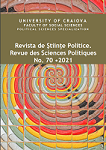Modeling emerging stock market volatility using asymmetric GARCH family models: An empirical case study for BSE Ltd. (formerly known as Bombay Stock Exchange) of India
Modeling emerging stock market volatility using asymmetric GARCH family models: An empirical case study for BSE Ltd. (formerly known as Bombay Stock Exchange) of India
Author(s): Jatin Trivedi, Mohd Afjal, Cristi Spulbăr, Ramona Birău, Krishna Murthy Inumula, Subhendu PradhanSubject(s): Economy, Media studies, Family and social welfare, Financial Markets
Published by: Editura Universitaria Craiova
Keywords: Financial econometrics; GARCH family models; Financial markets; Stock market; Volatility;
Summary/Abstract: This study focuses on volatility estimation using asymmetric GARCH family models in financial series of S&P BSE LargeCap index collected from BSE Limited (formerly known as Bombay Stock Exchange) of India. The objective of this paper is to investigate volatility in market, asymmetry in volatility, measure short and long term volatility persistence and impact of news on market. This study considers data from 01:2005 to 05:2020 counting 3818 daily observations and follows GARCH (1, 1), EGARCH (1, 1) and GJR (1, 1). The empirical results indicate the following:1) presence of changing asymmetry in series returns of S&P BSE LargeCap index and evidence of leverage effect, 2) presence of abnormal volatility shocks which indicates high investment risk, 3) estimated impact of news and effect on market and 4) an opportunity for investment and return prospects. Main results and findings include all data statistics outcomes with graphical explanations. Furthermore, detailed result statistics available in full for GARCH and GARCH family models.
Journal: Revista de Științe Politice. Revue des Sciences Politiques
- Issue Year: 2021
- Issue No: 70
- Page Range: 167-176
- Page Count: 10
- Language: English

